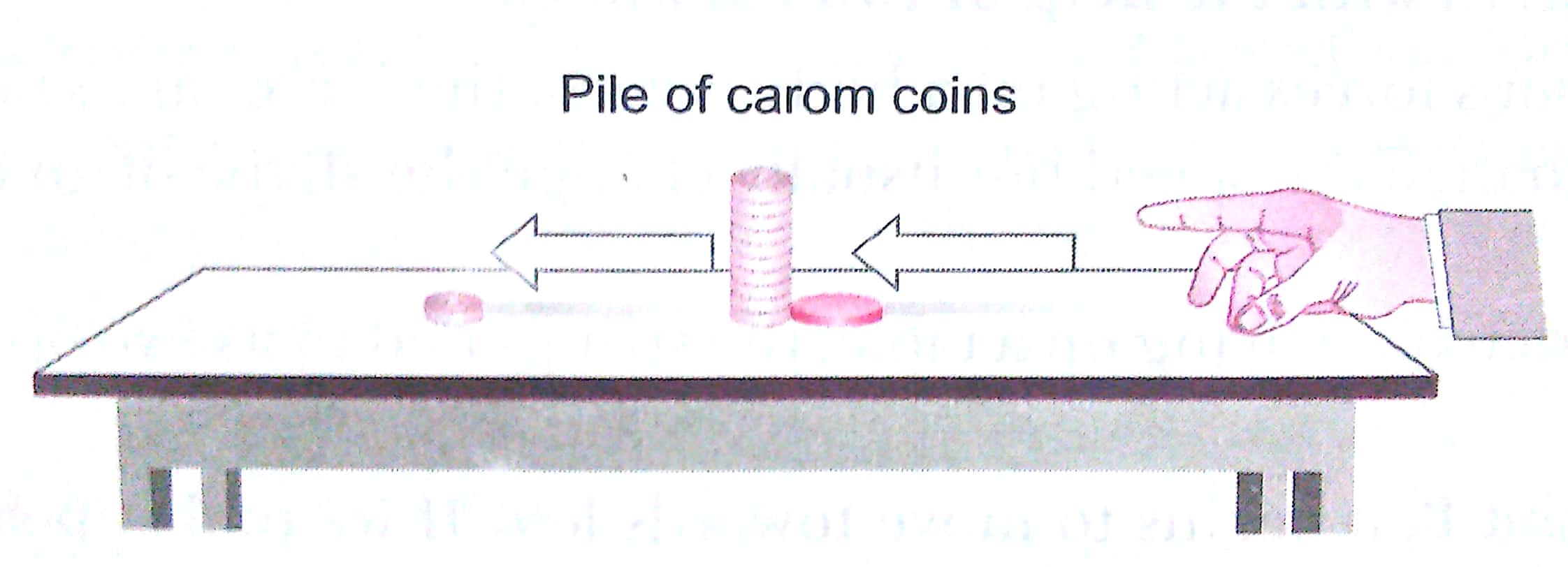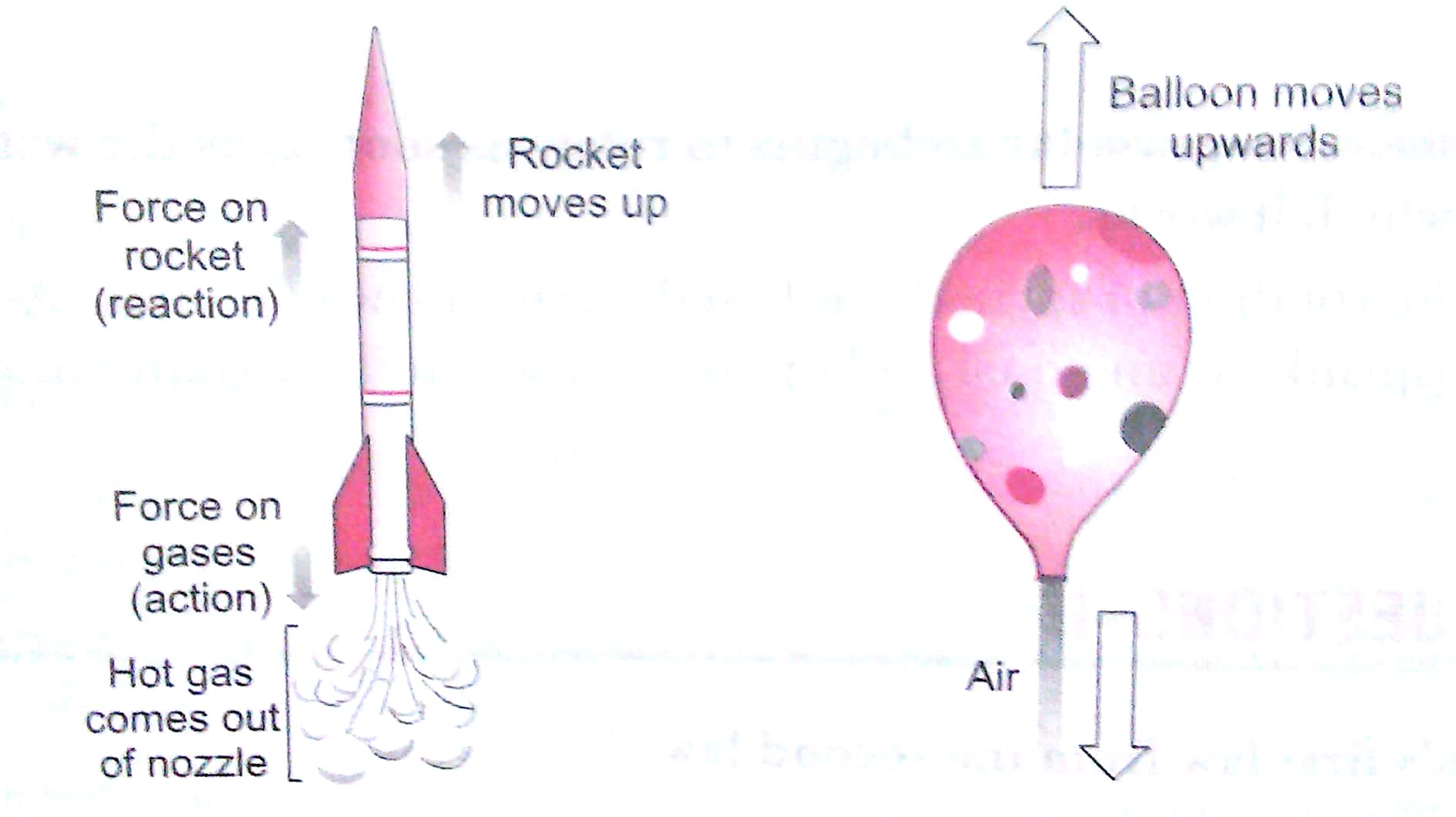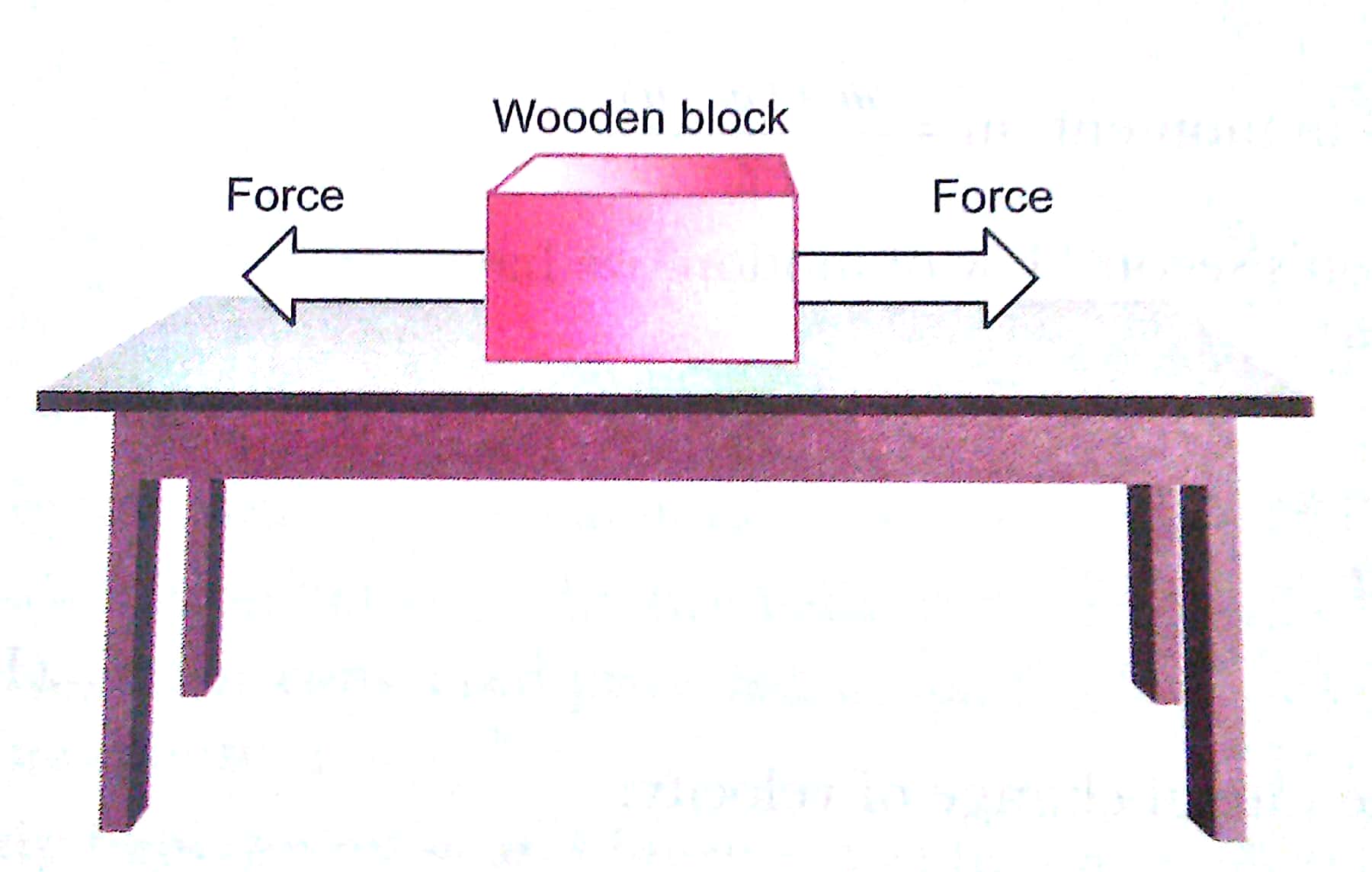Short Answer Questions – II - 3 Marks
Q. 1. Deduce Newton's first law from the second law.
Ans. According to second law, F = ma
If F = 0, a = 0 since m

or, v - u = 0 so, v = u for whatever time t is taken.
This means that the object will continue moving with uniform velocity, u throughout the time, t. If u is zero then v will also be zero. That is, the object will remain at rest.
Q. 2. When small boy is trying to push a heavy stone, mention various forces acting on the stone.
Ans. The various forces acting on the stone are:
(a) The gravitational force exerted by the earth which pulls the stone downwards.
(b) The force of reaction exerted by the ground on the stone vertically upwards.
(c) The force of pushing exerted by the boy.
(d) The force of friction exerted by the stone.
When a small boy tries to push a heavy stone, then all these forces are balanced, and therefore the stone does not move.
Q. 3. Describe in brief an activity to illustrate the property of inertia of rest.
Ans.

(a) Make a pile of similar carom coins on a table, as shown in figure.
(b) Attempt a sharp horizontal hit at the bottom of the pile using another carom coin or the striker. If the hit is strong enough, the bottom coin moves out quickly. Once the lowest coin is removed, the inertia of the other coins makes them ‘fall’ vertically on the table.
(c) The inertia of coins tries to maintain its state of rest even when one of the coin moves out.
Q. 4. Give few examples of Newton's third law of motion.
Ans. (a) Jet aeroplanes and rockets work on the principle of third law of motion.
In this case, the hot gases come out of a nozzle with great force, i.e., action and the rocket moves with high speed upwards as a reaction.
(b) If we fill a balloon with air and hold it with its mouth downwards, then when release the balloon, the air rushes out vertically downwards (action). The balloon moves vertically upwards (reaction).

Q5. Two friends on roller-skates are standing 5 m apart facing each other. One of them throws a ball of 2 kg towards the other, who catches it. How will this activity affect the position of the two? Explain your answer.
Ans. Separation between them will increase. Initially the momentum of both of them are zero as they at rest. In order to conserve the momentum the one who throws the ball would move backward. The second will experience a net force after catching the ball and therefore will move backwards that is in the direction of the force.
Q6. Why does an athlete puts some sands or cushion on the ground while high jumping?
Ans. When a high jumper falls on a soft landing site(such as cushion or a heap of sand), then the jumper takes a longer time to come to stop. The rate of change of momentum of athlete is less due to which a smaller stopping force acts on the athlete. And the athlete does not get hurt. Thus, the cushion or sand, being soft, reduces the athlete's momentum more gently. If however, a high jumping athlete falls from a height on to hard ground, then his momentum will be reduced to zero in a very short time. The rate of change of momentum will be large due to which a large opposing force will act on the athlete. This can cause serious injuries to the athlete.
Q7. Describe balanced forces with the help of two examples.
Ans. If the resultant of various forces acting on a body is zero, the forces are said to be 'balanced forces’. These forces do not change the speed but usually change the shape of an object.
Examples:
(a) Consider a wooden block lying on a table, the strings tied to its two opposite faces, as shown in the figure.
If we pull at point P, it begins to move towards left. If we pull at point Q, it begins to move towards right. But if we pull from both the sides with equal force, the block does not move. The two forces have now balanced each other.

(b) In a tug-of-war, the two teams pull the rope with equal effort; the rope is not moved in any direction. This is clearly because the forces exerted by the two teams are equal and opposite and thus get balanced.
Q8. Why do the driver and the person seated in front seat need a seat belt?
Ans. In a car accident, a fast running car stops suddenly. Due to this the car's large momentum is reduced to zero in a very short time. The stretchable seat belts tightened by the passengers of the car increases time taken by the passengers to fall forward. Due to longer time, the rate change of momentum of passengers is reduced and hence less stopping force acts on them. So, the passengers may either not get injured at all or may get less injuries. It is obvious that seat belts reduce the passengers' momentum more gently and hence prevent injuries.

